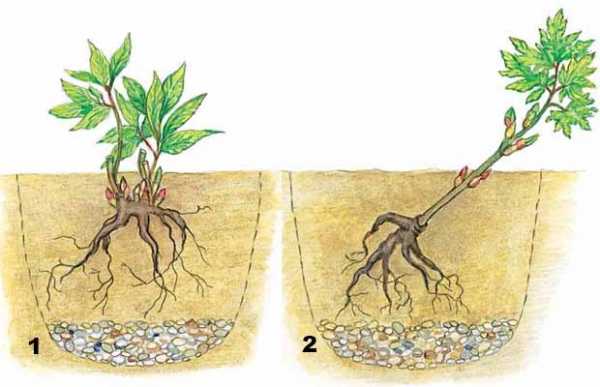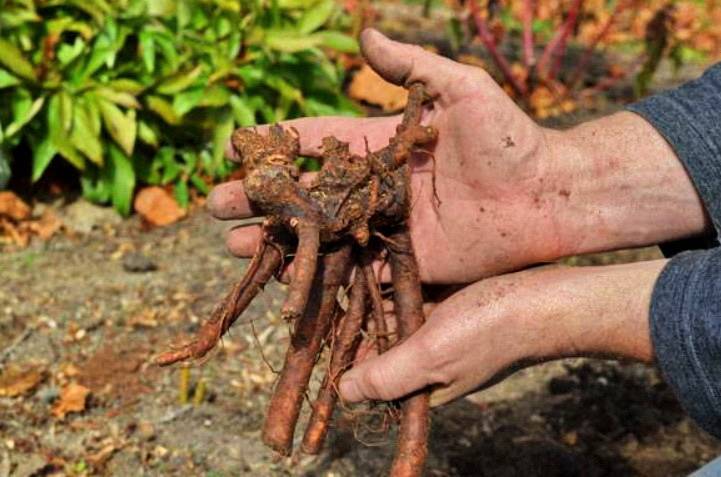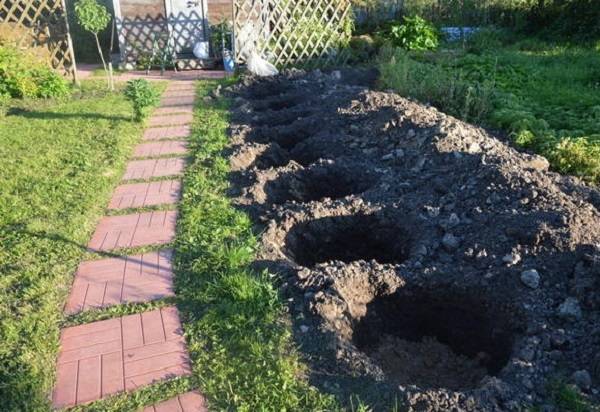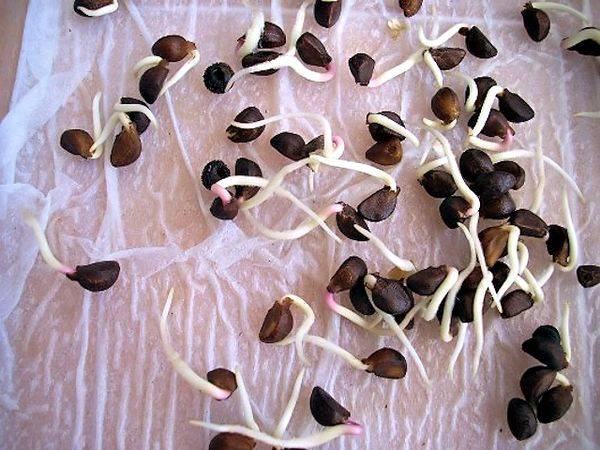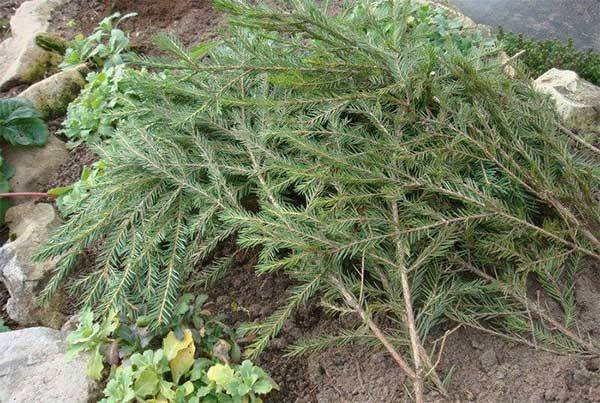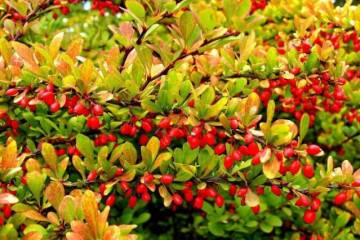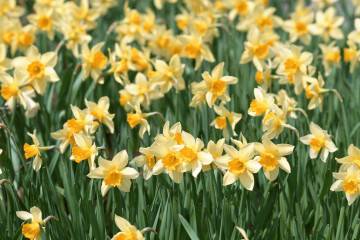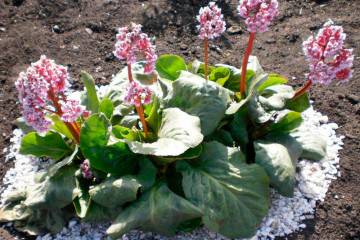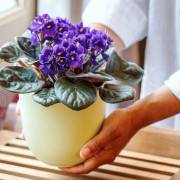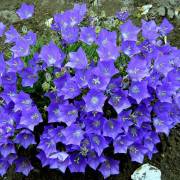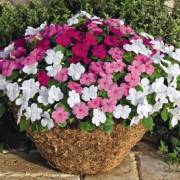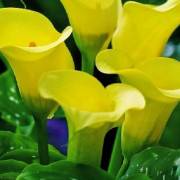Peonies planting and care in the open field in the country
Content:
Peonies are long-lived garden flowers. These lush oriental flowers are a real garden decoration in the spring and summer season. The article reveals the issues of caring for them: how to plant peonies, and what time it is best to do it, how to care for peonies immediately after planting and for the next season. Recommendations on preparing young seedlings for winter are given.
What time is better to plant peonies
Planting and grooming outdoors requires specific rules for different seasons. The health of the bush, its growth and flowering depends on this. It is important to understand what processes occur in the root system at different times of the year.
In the spring, peonies direct their forces to the growth of the aerial part of the bush. A small share, which will take root badly and give all its strength to the growth of greenery, may later bloom late and poorly. In the fall, preparations are underway for wintering and the strengthening of the root system in the soil. The bush is completely focused on the growth of roots and preservation of nutrition inside them.
Such planting material can bloom as early as the next season with proper care. It is for these reasons that peonies need to be planted when the bush goes into preparation for winter - in the fall.
How to plant peonies in spring
When planting in spring, it is important to catch the moment when the bush is just beginning to grow small suction roots. Depending on the storage conditions of the cut, such roots begin to grow in April-May.
The most reliable way to plant peonies in spring is to plant them in a pot, not in open ground. The seedling will take root in the pot and will be ready for a successful planting in the fall. It is very easy to answer the question of how to properly grow such a peony before planting in a flower bed. You just need to create suitable conditions:
- The temperature is not higher than +10 C, which contributes to the growth of the root mass, while the buds will sleep.
- Darkness, so that the buds do not wake up and do not stretch out into thin shoots;
- Moist soil for the roots to feed and fill the pot.
The optimal place for storing such a seedling is a cellar or basement. It is important that it is dry there, otherwise the fungus will quickly start on the peonies. In the fall, the cut is planted along with a lump of earth on a prepared bed.
Features of planting in the fall
When choosing the period for autumn planting, it should be borne in mind that a peony needs at least three weeks for successful rooting. During the rooting period, there should be no sudden changes in temperature and frost.
Depending on the geography, Russian gardeners plant peonies:
- In late August and early September, the northern regions - Siberia, the Urals, the Leningrad region.
- From mid to late September - planting dates for the middle zone and the Moscow region.
- The last days of September and until mid-October are the landing dates for the southern regions (Krasnodar, Kuban, Caucasus).
Often, gardeners order peony seedlings by mail, and they arrive late, when the garden is already covered with snow and the temperature is dropping. How to plant peonies in this case.If you plant the planting material in cold frozen soil, it will rot there until spring. In this case, the peonies should be grown in a pot as in the spring.
Within 3-4 weeks, in a cool room of a loggia or cellar, a young peony will grow a root and anchor in the soil. Such a spine will already be ready for the winter season. Next, the peony is buried in the open ground of the garden along with the pot.
Features of planting a tree peony
This species has thinner roots, and its growth points are located at the level of the basal neck. During planting, the root collar cannot be buried; it is left flush with the soil. If a tree-like peony is grafted to the roots of a herbaceous one, the graft is deepened by 10 cm.
Planting perennial herbaceous peonies
The buds of herbaceous species are located only on the roots. When planting, it is important to deepen the buds at least 3-4 cm from the surface of the garden. Planting deep can delay flowering times. With a high level of moisture, buried buds quickly rot.
Instructions for planting seedlings in open ground
Peonies are very sensitive to planting and transplanting. Their roots, although they look powerful, are very delicate and take a long time to take root in a new place of growth.
How to choose a place for planting peonies
When choosing a location, consider the following:
- Lighting. There should be plenty of sun, especially in the morning. Afternoon rays should be scattered. In the shade, the bushes bloom weakly and late.
- Air flows. The flower bed should be well ventilated, but the peony is afraid of gusts of wind and drafts.
- The groundwater. Since the roots of the peony go a meter deep, the groundwater must go even deeper. Planted peonies in the lowlands of the garden quickly rot and become infected with fungi. This is especially true for the period of snow melting. If a lot of moisture from the snow collects under the bush and it lingers for at least three days, the peony will most likely die.
- Neighborhood. Bushes are seated with each other at a distance of no closer than 1 meter. Also, neighboring plantings, buildings, fences should be at a distance of 1.5 meters.
- The soil. Loamy slightly alkaline soil (6.5-7.5 PH) creates comfortable conditions for growth. Nutrition and lightness are important in the soil. Humus, sand and peat are added to the planting mixture.
Do not plant peony bushes under trees with a spreading crown. Peonies will pick up light, and moisture that will collect under the tree will begin to accumulate at the roots. This is how rot and fungus appear.
Preparation of seedlings
The acquired planting material requires a detailed examination. The seedling must have a healthy appearance, the "eyes" are pink and large. If damage is found on the roots, they are cut off. The cuts are processed with charcoal. On the purchased planting material, the old cuts are processed with brilliant green.
For better rooting, the cut is immersed in Kornevin's solution (or other analogue) for several hours. Next, the cut must be allowed to dry. After planting, the same solution can be used to water the bush.
If the division is taken from a summer home bush, then the preparation will take a little longer. The root taken out of the ground should be washed and dried, leaving overnight. This will make it more elastic. The rhizome is cut into pieces with a sharp blade. One division should be about 10 cm long, have 3-4 healthy buds and adventitious roots.
Required tools
Planting peonies does not involve the use of special equipment and tools. One shovel is enough. To determine the level of deepening of the kidneys, a stick or a rod is placed across the pit.Such a mark will allow you to accurately determine the deepening of the kidneys to the level of the hole.
If the gardener will separate the plot from his home bush, you should take a pitchfork. With their help, it is easier and safer to get fragile roots, which often go to a depth of one meter. The hole is dug in with a pitchfork in a circle, and the roots are taken with bayonet shovels.
Preparing a pit for planting peonies
A place for a peony is prepared a few weeks before disembarkation. The planting hole is dug 60 * 60 in size and 80 cm deep. The bottom is filled with drainage from broken brick and large expanded clay. The prepared hole is covered with soil by a third, then a layer of fertilizers and soil again. As a fertilizer, the soil from the hole is mixed with compost, ash and superphosphate. Until the day of planting, the soil will sink, and the fertilizers will evenly disperse over the soil.
Features of planting seeds for seedlings and in open ground
For breeding, seeds are harvested from mid-August to mid-September, when the seed boxes are ripe. Choose large brown seeds without visible damage. After collecting, they are immediately sown into the soil. So peonies go through a period of stratification - the ripening of seeds. This process takes place in two stages - under the influence of heat and cold. If optimal conditions are created for the seeds during germination, they will grow in the next spring. Otherwise, the seedlings will sprout in a year.
If you plant peonies for seedlings, then the stages of stratification should be carried out by the seeds on their own. Step by step process:
- Before planting, the seeds are soaked in manganese.
- Sow on wet sand and place in a warm place to germinate. The soil temperature should not fall below +28 C.
- When the roots appear on the seeds, they are pinched and planted in peat.
- At a temperature not higher than +10, a growth bud is formed in the seed, from which an shoot will appear.
Seeds are planted in separate pots and shoots are looked after throughout the summer. In the fall, seedlings are planted in the beds.
Not all seeds sprout even after proper preparation. With this in mind, you should sow seeds with a margin. Average germination of peony seeds is not more than 50%. If seeds are purchased, their appearance should be assessed, since germination directly depends on the age of the seed. Old seeds have a wrinkled and dry surface.
Seed propagation is a very painstaking job. Peonies grown from seeds bloom only 6 years after sowing. Plants obtained from seeds of hybrid varieties do not retain their varietal characteristics. But there is a chance to get a completely new variety, which will differ in color and shape of flowers.
Care of young peonies after planting
The stress caused by planting in new conditions, the plant experiences the entire season. Gardeners who propagate peonies put the care and cultivation of young bushes in the first place. Complete care ensures healthy growth and abundant flowering.
Watering
After the autumn planting, the young peony is watered 2-3 times in the next 30 days (before the onset of frost). In the spring, the first three days after planting, the bush is watered every day and abundantly. Further, humidification is adjusted according to the weather. Peonies love rare and abundant watering. It is better to moisten the soil in the morning or evening.
Fertilizer
The fertilizer mixture applied to the planting pit ensures full development over the next two years. After this time, top dressing is applied in early spring, after awakening. During and after summer flowering, the bush is fed, alternating minerals and organics.
Mulching
After planting, the soil around the bush must be mulched with peat, sand or compost. Mulch is a great helper - it retains moisture, providing soil breathing. And also keeps the flower garden clean, inhibiting the growth of weeds.
First cut
When planting seedlings from young bushes one or two years old, experienced gardeners do not allow them to bloom.So the plant develops the root system better and takes root. Therefore, it is better to purchase 3-4 year olds. During flowering, the stems are under stress, so it is important to tie up the bushes.
After the first flowering, the stems are cut off so that the bush does not expend energy on the formation of fruits and seeds. But you do not need to cut the stems short, it is important to leave a few leaves on the bottom. In this form, the bush will successfully form replacement buds at the end of summer.
Preparation for wintering
In the first year, the young peony should be covered for the winter. This is especially important for central and northern Russia. Before the shelter, the bush is spud. A layer of mulch of at least 15 cm is made from sawdust, spruce branches, peat or compost. The bushes should be opened in early spring so that they do not get locked up.
Lush bushes, handsome peonies decorate the summer cottage with their colorful balls and greenery. As soon as this bright bush appears in the garden, the gardener immediately wants to diversify his peony with new varieties. With information on the correct planting and caring for seedlings, even a beginner will find it easy and simple to plant colorful bushes on their site.


